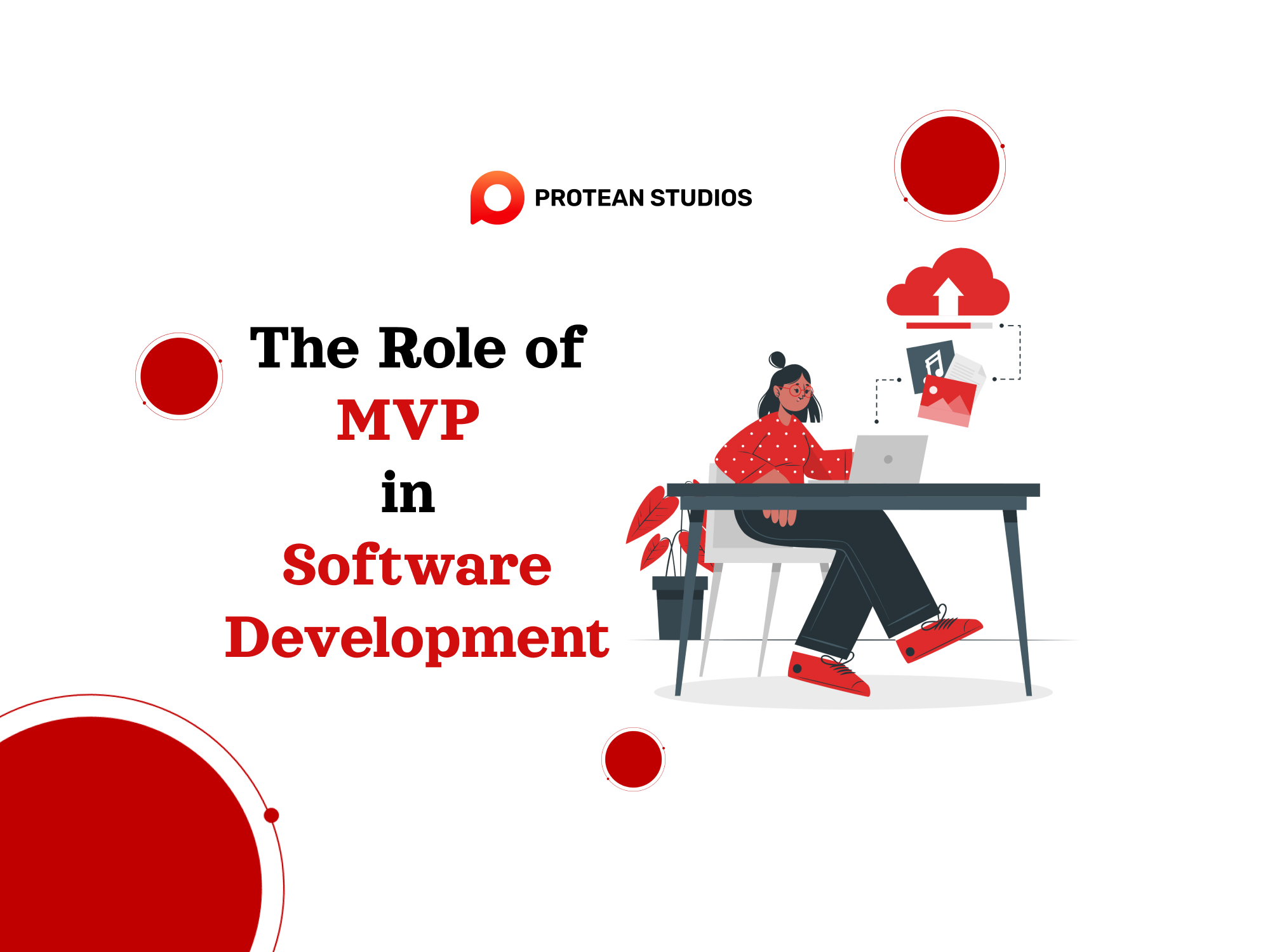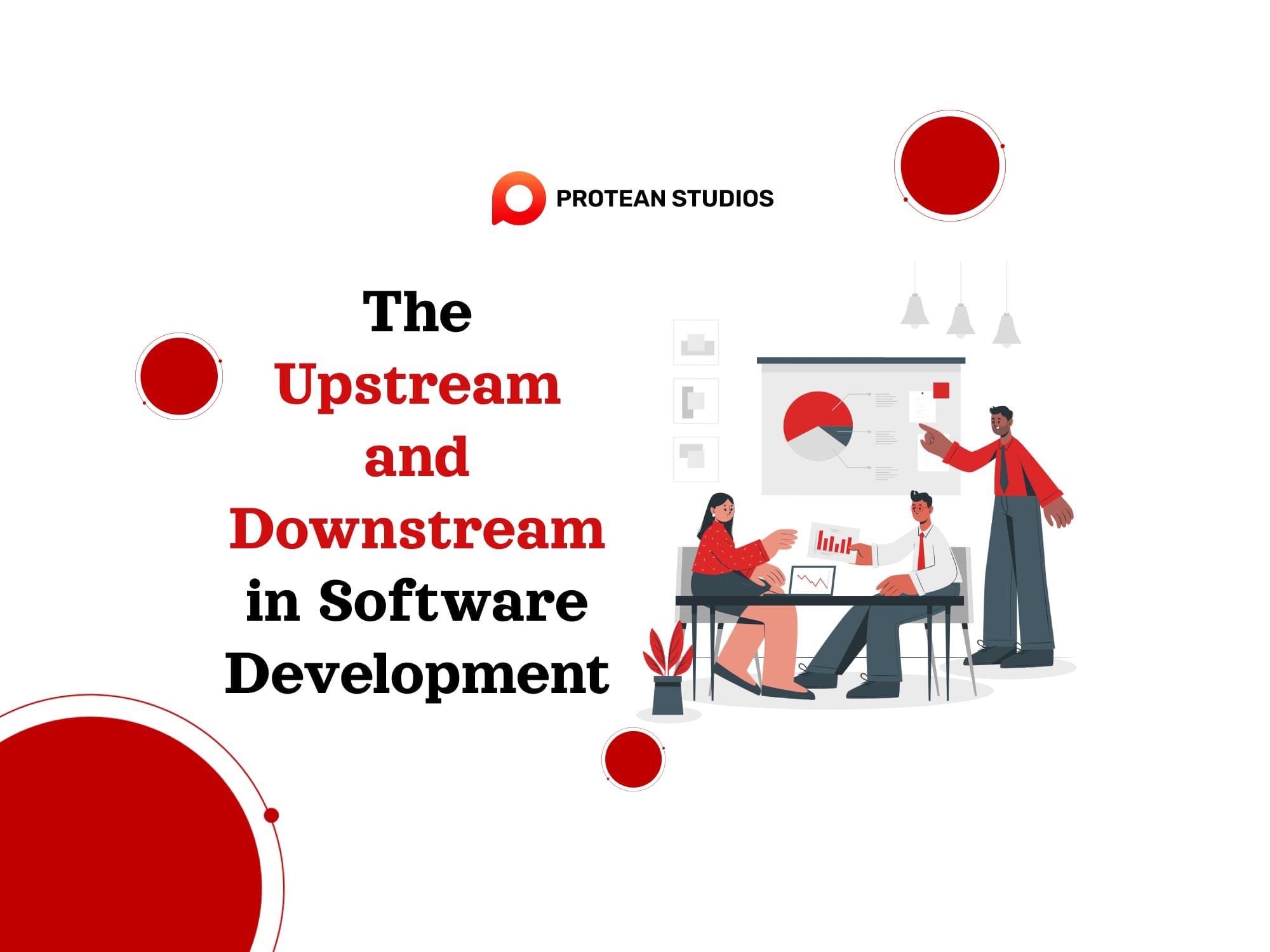Offshore software is a special service that many countries use to save money and enhance business efficiency. Offshore development offers an advantage because it lets businesses find talented people from different places and save money on IT projects.
So, in this blog, Protean Studios will share a comparison of offshore software development rates around the world. We'll look at how much it costs to get software developed in different countries in 2023.
I. Revealing offshore software development rates across countries
Geographically, the global offshore outsourcing market has many regions. It involves Asia, Western Europe, Central and Eastern Europe, North America, Latin America, and Africa. In each region, there are typical offshore outsourcing development countries represented in the table below.
Region | Country | Hourly rate |
Southeast Asia | Vietnam, Philippines, Malaysia | $18 to $71 |
South Asia | Sri Lanka, India, Bangladesh, and China | $24 to $71 |
Latin America | Mexico, Colombia, Brazil, Chile, Peru, and Argentina | $30 to $96 |
Central and Eastern Europe | Poland, Belarus, Romania, Hungary, Bulgaria, the Czech Republic, Austria, and Slovakia | $26 to $95 |
Pricey Destinations: The US, Australia, and Western Europe | United States, UK, Germany, North Australia, France, Denmark, and Finland | $62 to $209 |
When looking at the table, you can see that each region will have a different price. This depends on economic shifts, skills, and industry demand, especially seniority and the tech stack.
II. Reference pricing models for IT outsourcing
Understanding the pricing models for IT outsourcing is essential for making decisions when opting for offshore software development. Different pricing models suit different project requirements and structures. Here are three pricing models used in the IT outsourcing industry.
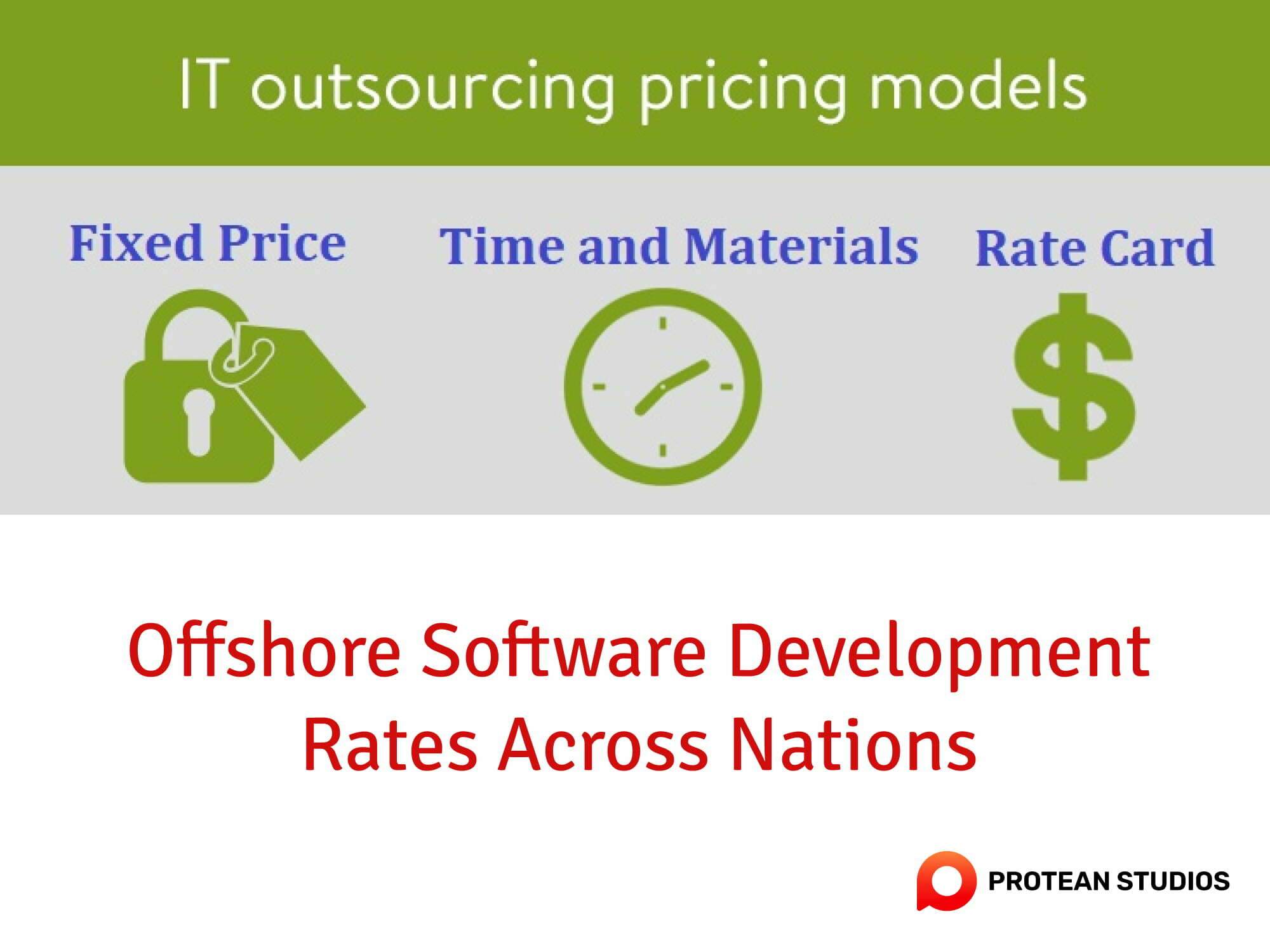
1. Time and Materials
The time-and-materials pricing model pays for the time and resources invested in the project. This model offers flexibility and is suitable for projects with evolving requirements. It also applies when the project scope is not well defined at the outset. We'll explore the advantages and considerations of this model.
With Time and Materials (T&M), people can change project needs, shift goals, and swap features. Or even halt development whenever clients want. Yet, it has some drawbacks, like making it difficult to identify the exact budget and paying for wait time.
2. Rate Card
In the rate card model, the client pays a fixed monthly fee to an external provider. It covers the salaries of developers working on the project. This way, they save time and resources. While also benefiting from the skills and capabilities of other developers. This structured approach simplifies budgeting and cost estimation.
3. Fixed Price
The fixed-price model agrees on a set price for the entire project. It often depends on well-defined project requirements. It also provides cost predictability, making it easier for budget planning. So, this is the cost of the project base.
II. Top locations for offshore software development
Offshore software development is a global practice. It allows businesses to collaborate with skilled professionals from various regions. Here, we highlight some of the prominent regions known for their offsourcing activities.
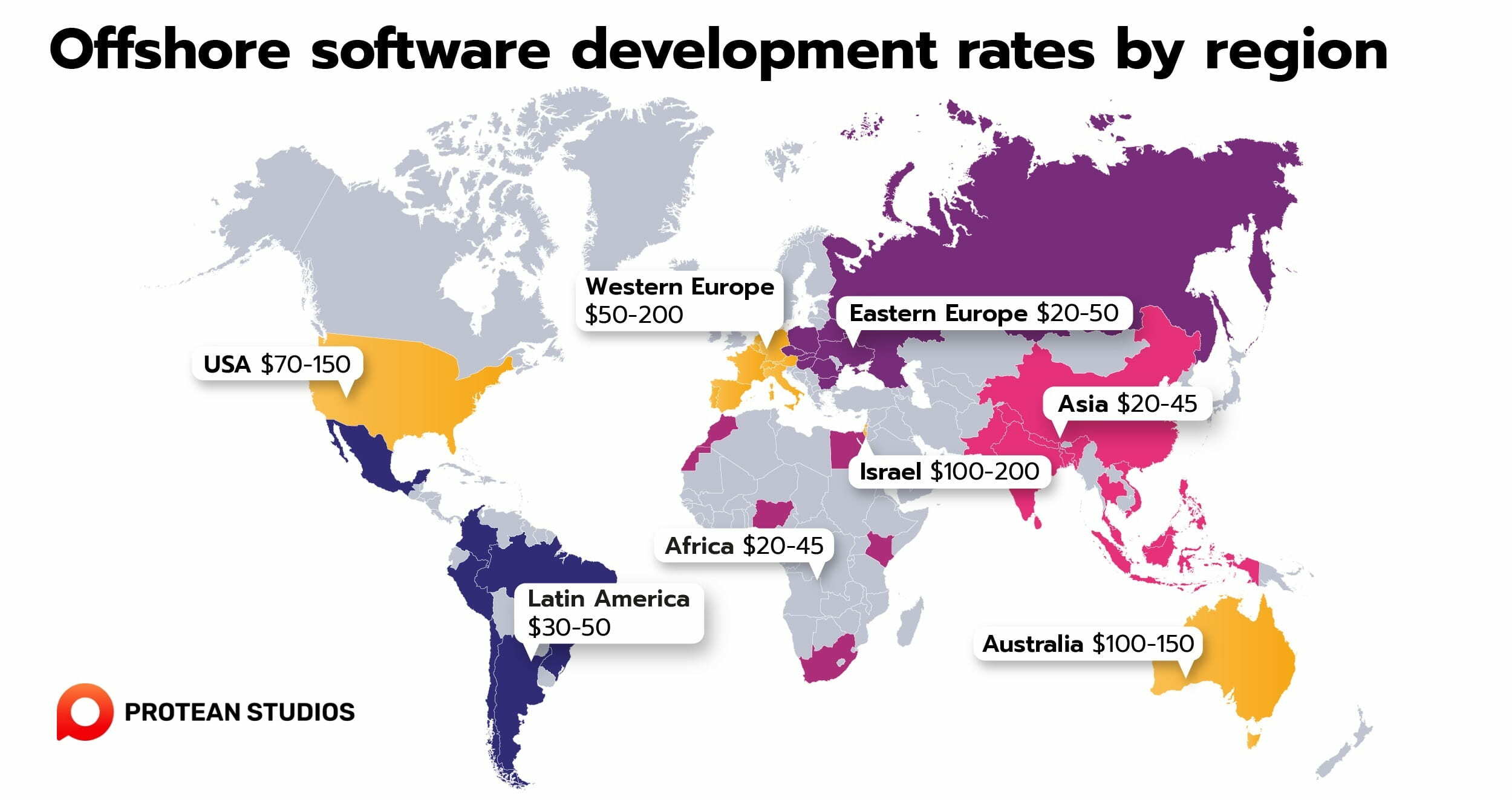
1. Eastern Europe
In Eastern Europe, the typical yearly income for a software developer is around USD 108,680. It is like average hourly earnings of approximately USD 55. The region boasts a sizable tech talent pool, with about 8.4 million professional developers. So they can ensure a wide variety of expertise and meet the time zone differences.
Major tech hubs in Eastern Europe include Poland, Bulgaria, Belarus, and Romania. In these areas, the offshore software development industry is particularly thriving.
2. Asian region
Southeast Asia stands out as a burgeoning tech hub and an attractive destination for IT outsourcing. The region boasts some of the most competitive software development hourly rates, ranging from $18 to $70 per hour. So, IT outsourcing to Southeast Asia can yield significant cost savings, with an average monthly cost between $3,100 and $12,096.
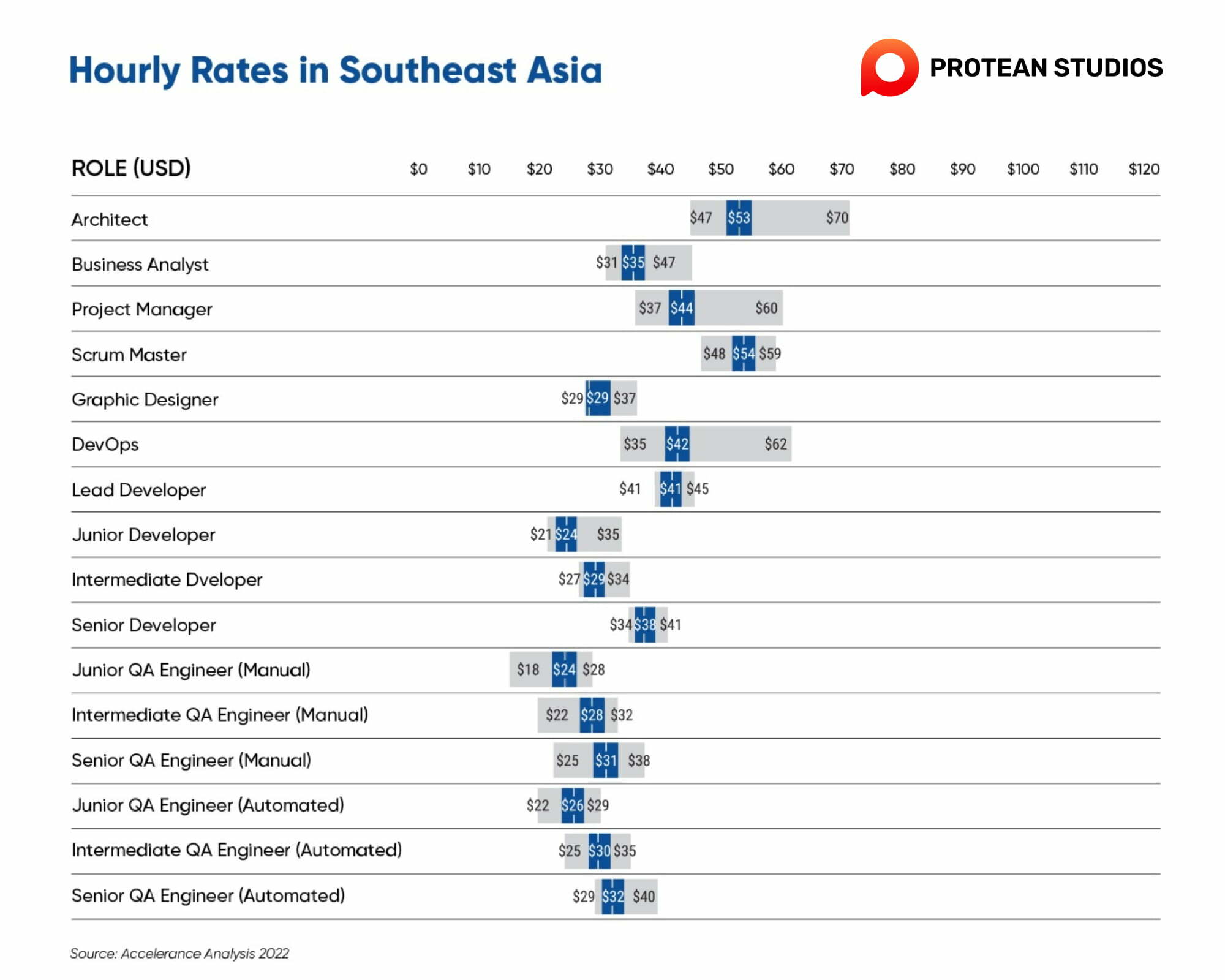
A 2022 survey by Statista unveiled the typical hourly rates for software development in various Asian countries:
India: $20-$40 per hour
China: $30-$50 per hour
Philippines: $15-$25 per hour
Vietnam: $15-$30 per hour
In this region, Vietnam is making a big mark on the global software outsourcing scene. The country provides a great space for businesses wanting affordable and top-notch software development. The country's IT outsourcing is booming, with a strong annual growth rate of 13.31%.
This segment can reach $534.90 million in 2023. It is set to climb to $881.90 million by 2027. Vietnam has even secured a spot among the top 6 ranking locations for IT outsourcing, as per Kearny's Global Service Location Index.
Learned more: Hotspots For Leading Offshore Outsourcing Countries In APAC
3. Africa
In Africa, a software developer's median annual salary averages around R600,000 (USD 33,929). It is leading to an average hourly rate of approximately R 308 (USD 17.42).
The region benefits from a large software developer workforce, totaling about 716,000 professionals. They have strong skills in the English language and extensive experience in web and mobile development.
Major tech hubs in Africa include Lagos, Cape Town, Nairobi, Cairo, and Johannesburg. These countries serve as significant centres for the burgeoning software development industry.
4. Latin America
In Latin America, a software developer earns an annual median salary of $88,920. It means an average hourly rate of about USD 45. The region boasts a talent pool exceeding 1 million developers. They are well-versed in popular technologies such as JavaScript, HTML5, PHP, Python, and C#. Furthermore, the compatible time zone with the United States aids seamless collaboration for US-based clients.
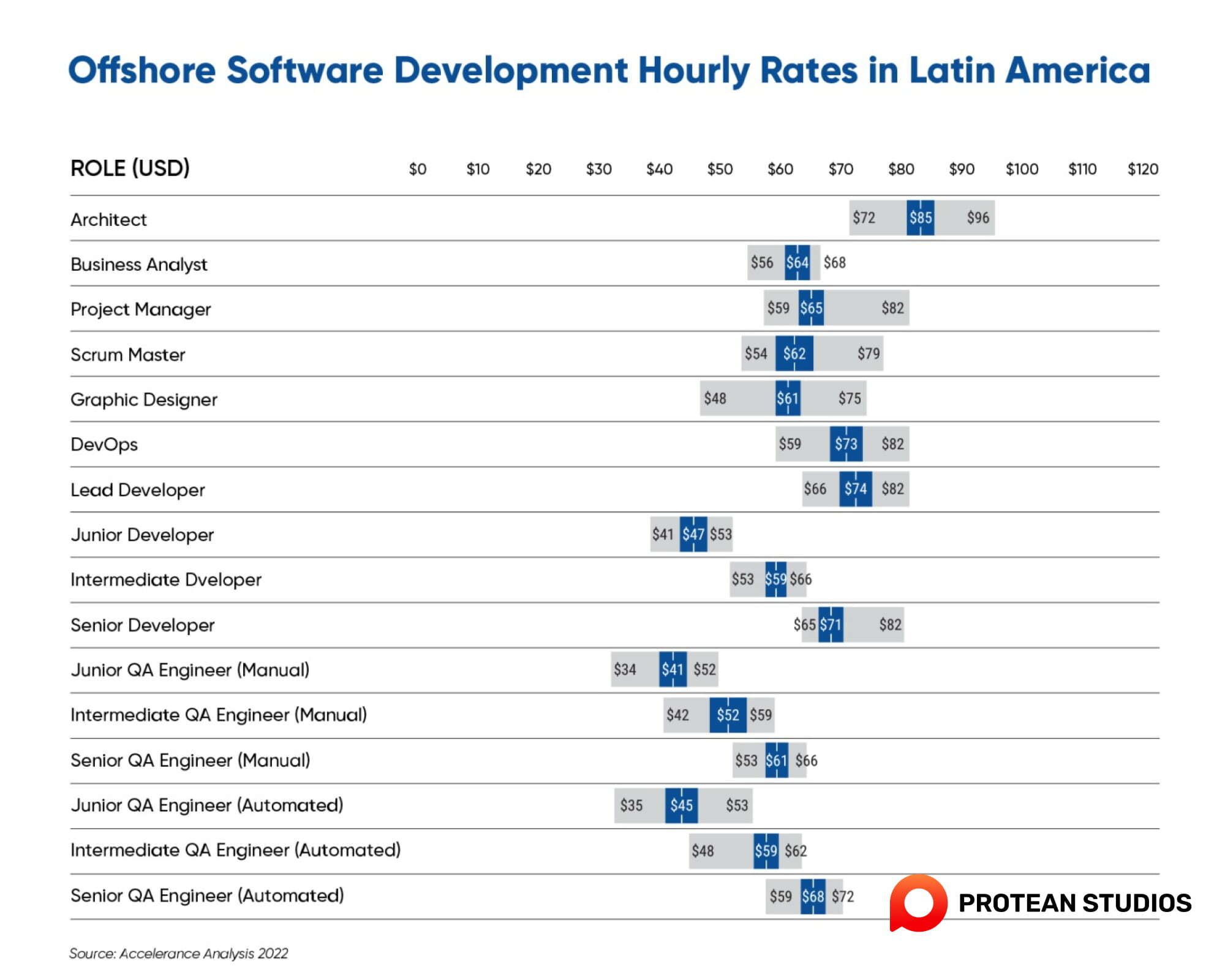
Key tech hubs in Latin America include São Paulo, Buenos Aires, the US, and Rio de Janeiro. So, it can foster a thriving software development industry.
IV. The Bottom Line for Offshore Outsourcing Development
Engaging in offshore software development presents a multitude of advantages. From cost savings to accessing a global talent pool, offshore development has transformed the industry. However, challenges such as communication barriers, cultural differences, and data security concerns need to be managed.
It strikes a balance between cost-efficiency, quality, and effective collaboration. These are essential for successful offshore development projects. Businesses must evaluate their project requirements and assess potential outsourcing partners. The aim is to maximize the benefits of offshore outsourcing while mitigating associated risks.
Understanding the costs of offshore software development across the globe is key to making informed decisions. From the cost-effectiveness of Asia to the emerging potential in Africa and Latin America, each region offers unique advantages. To maximize benefits, consider not only costs but also factors like talent pools and time zone alignment.
If you want to explore offshore opportunities, please connect to PROS. We will handle the difficulties your project demands to provide effective solutions.



